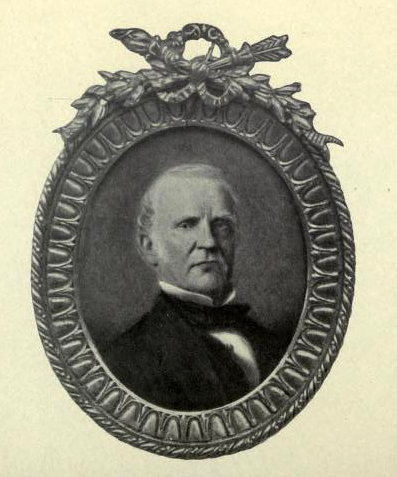Edward Lumb was born in Yorkshire. According to the memoirs of his daughter Anne, Lady Macdonell, he travelled to Buenos Aires aged sixteen with his merchant uncle, Charles Poynton, and after some fortunate enterprises set up in business there. In 1833 while voyaging on the Beagle Charles Darwin stayed with Edward Lumb, and he wrote to his sister Caroline that it was strange to sit in an English merchant’s house and watch a lady making tea amid English furnishings. The lady was Lumb’s wife: in 1825 he had married Elizabeth Yates (1809–75), who had emigrated to South America with her older brothers and their families when she was eight. In all the Lumbs had sixteen children, at least three of whom died in childhood. The family lived in the Calle Florida in the city, now an elegant shopping street, and spent the summers on their quinta in the country. Edward Lumb’s main business was import and export trade, but he was also in 1862 the first chairman of the Great Southern Railway, which ran from Buenos Aires to Chascomús, and later a partner in the Mercantile Bank of the River Plate.
His mercantile contacts enabled him to dispatch fossils back to Britain for Darwin: he arranged for megatherium bones to be sent to John Stevens Henslow back in Cambridge. He also had family connections in South America: his brothers-in-law were William Yates (1783/4–1825), and John Yates (1788/9–1837), who had an estate at Quilmes, just outside Buenos Aires. In 1821 Mrs Lumb’s sister Mary Yates (1802/3–72) had married George Keen (1794–1884), a sheep farmer with extensive estates in Argentina and Uruguay. Edward Lumb gave Darwin a letter of introduction to them, and Mr and Mrs Keen entertained him at their estancia in Uruguay, La Virgen de los Dolores, at Mercedes on the Rio Negro, from the 22nd to the 26th November 1833. In March 1834 Darwin wrote from the Falkland Islands, to check whether megatherium bones from Mr Keen had been sent on their way to England, since Henslow was eager that every scrap be collected, and in May Lumb sent a case of specimens to Cambridge. Darwin and Lumb maintained their correspondence after Darwin’s return to England, since a letter of 1847 refers to information sent through Mr Lumb; but by 1852 Darwin confessed to George Waterhouse that he did not know if he was still at Buenos Aires, or even still alive. However, in 1867 Darwin’s son, William, went to the opening of the Blackmore museum in Salisbury, and there met Mr Blackmore who had just received a letter from Mr Lumb. Lady Macdonell recorded that her family had returned to live in England in 1866 and settled near her married sister in Hackbridge, Sussex; but after the house caught fire her mother persuaded her husband to go back to Buenos Aires in October 1867. However, they had eventually settled in Surrey and purchased a house in Carshalton not long before Edward Lumb’s death. In June 1872 Alfred Tylor, who also lived in Carshalton, wrote to Darwin and included the news that Mr Lumb had died two months previously, saying that ‘He mentioned you to me in his last illness with great affection’.
References:
Macdonell, Anne Lumb. 1913. Reminiscences of diplomatic life; being stray memories of personalities and incidents connected with several European courts and also with life in South America fifty years ago. London, A. & C. Black.
Reber, Vera Blinn. 1979. British mercantile houses in Buenos Aires. Cambridge, Massachusetts and London: Harvard University Press.
http://www.argbrit.org/ (accessed August 2017)
BMD (Death index); Buenos Aires city census, 1855; Argentina census, 1869 (Ancestry.com, accessed August 2017)



